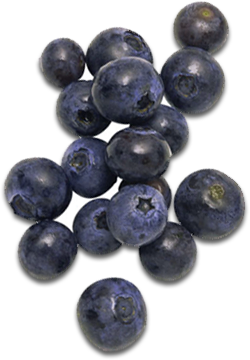no items to display
Take Your Daily Consumption of Fruits and Vegetables and Double It!
It’s not exactly news that most Americans need to eat more fruits and vegetables. But a new study takes a global look at the problem and finds that a large majority of adults worldwide—60 to 87 percent depending on the region—don’t meet the World Health Organization (WHO) minimum recommendation of five servings of fruits and vegetables a day. The study authors say these folks (that is, most people) need to at least double what they’re currently eating in order to maximally benefit from the health-giving nutrition in produce.
Another interesting fact that emerged from the study: Overall, people who eat at least five servings of fruits and vegetables a day have two to six times the phytonutrient intake of those who eat fewer than five servings. Why do phytonutrients matter? These superstar compounds help reduce risk of heart disease, cancer, and a host of other chronic, degenerative diseases.
Published in the British Journal of Nutrition, the study divided the world into 13 regions. Here’s what they found, region by region:
Worldwide, certain fruiting vegetables like tomatoes and corn, as well as tropical and subtropical fruits such as bananas, are widely available. This is good news, because these foods contain:
·Lycopene, believed to help reduce risk of heart disease and prostate cancer.
·Alpha-carotene and beta-carotene, antioxidants that can be converted in the body into the essential nutrient vitamin A.
·Lutein and zeaxanthin, shown in multiple studies to support vision health by preventing age-related macular degeneration and cataracts.
Europeans get more alpha-carotene and beta-carotene than people in other areas of the world, possibly because of the popularity and availability of carrots there.
In Asia, people don’t eat many berries, and therefore may be low in ellagic acid, a phytonutrient that may slow tumor growth.
Finally, South and Central Americans don’t consume as much lutein and zeaxanthin, which support vision health, as the rest of the world, despite their fondness for corn.
You may think you eat enough fruits and vegetables, but research has shown that people consistently overestimate how much of the good stuff they eat and underestimate how much of the bad stuff passes their lips.
In fact, a study published in 2000 tracked how many servings of different food groups study participants believed they ate on a particular day against how many they really did.[i] The men said they ate about two servings of fruit a day, but they actually ate less than one serving. The women were a little better at estimating, saying they ate about two and a half servings of fruit per day. But they were still off, because in reality they ate about only two servings. Both genders also reported eating fewer grains, fats, oils, and sweets than they really did.
My point is, even if you think you don’t, you probably need to double your fruit and vegetable intake too. For this purpose, I find the MyPlate graphic, which was developed by the USDA to replace the outdated Food Pyramid, surprisingly inspirational.
Basically, at every meal you should fill half your plate with fruits and vegetables. I can’t tell you how many times I have looked down at my plate before eating, asked myself if it was half fruits and vegetables, and then scooped back some of the main dish to make room for extra produce.
Do you have any tricks for easily upping your fruit and vegetable intake? Share them below!
[i] Consumption of Food Group Servings: People’s Perceptions vs. Reality. USDA Center for Nutrition Policy and Promotion. Insight 20. Oct 2000.






